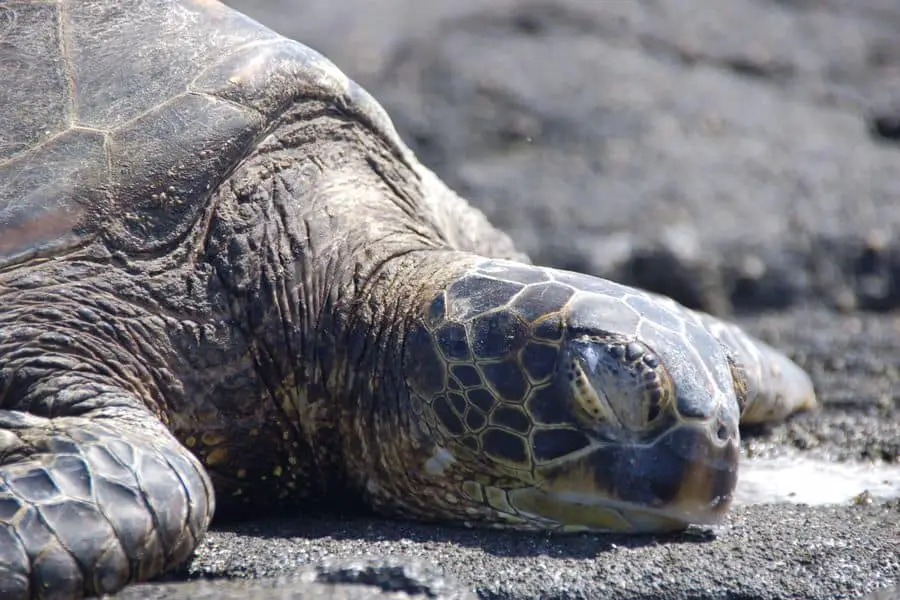Hey, did you know that rest and sleep are as crucial for growing baby turtles as they are for humans? Just like us, baby turtles need a sufficient amount of rest and sleep in order to grow and develop properly. In fact, rest and sleep play a vital role in the overall health and well-being of baby turtles.
In our upcoming article, we will dive deeper into the importance of rest and sleep for growing baby turtles. We will explore why rest and sleep are necessary for their growth, and how it affects their physical and cognitive development. Additionally, we will discuss the optimal sleeping conditions for baby turtles and provide tips on how to create a conducive environment for them to rest and sleep peacefully. So stay tuned to learn more about why rest and sleep are essential for the healthy growth of baby turtles! Baby turtles may seem small and fragile, but they have a lot of growing to do. Just like human babies, they need plenty of rest and sleep to support their physical and cognitive development. In this article, we will explore the sleep patterns of baby turtles and understand why sleep is crucial for their growth. We will also discuss the impact of sleep deprivation and environmental factors on baby turtles’ sleep, as well as strategies to promote optimal rest and sleep. Let’s dive in!
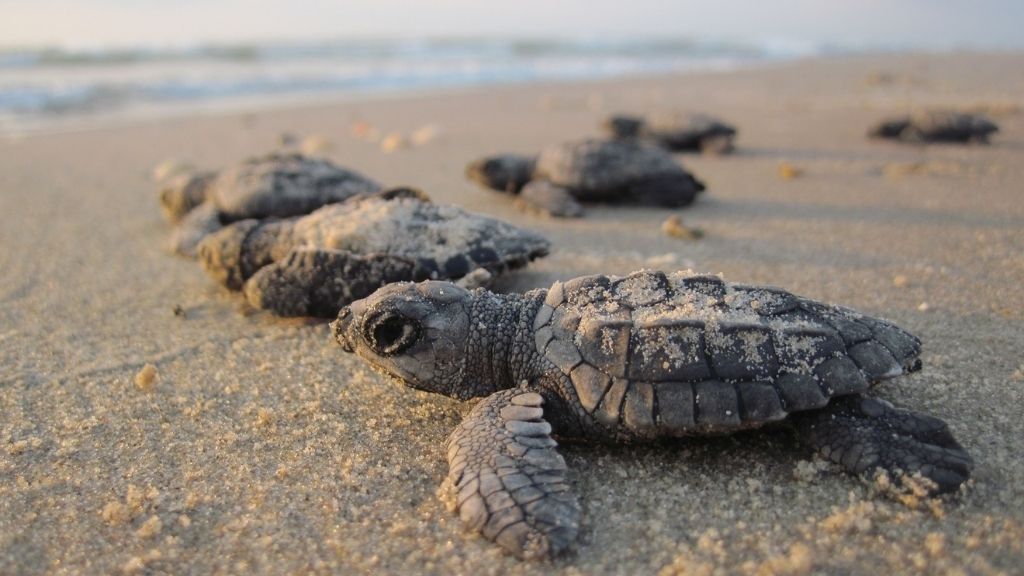
The Sleep Patterns of Baby Turtles
Different Stages of Sleep
You might be surprised to know that baby turtles, like other animals, go through different stages of sleep. Similar to humans, they experience periods of deep sleep and lighter sleep. During deep sleep, their body is in a relaxed state, enabling important processes to occur. Light sleep, on the other hand, allows them to be more aware of their surroundings and respond to any potential threats.
Sleep Duration and Frequency
The sleep duration and frequency of baby turtles vary depending on their species and age. Generally, baby turtles tend to sleep more than adults, as they are in a crucial stage of growth. They may sleep for several hours at a time, alternating between periods of rest and activity. The exact sleep duration and frequency also depend on factors such as water temperature, availability of food, and their overall health.
Sleep Positions and Habitat
Baby turtles have unique sleep positions that help them camouflage and protect themselves. Some species, such as the loggerhead turtle, bury themselves in the sand during sleep. This not only helps them blend with their surroundings but also keeps them safe from potential predators. Other species, like the green turtle, may sleep while floating in the water. Their shell provides them with protection while they catch some Z’s.
The Role of Sleep in Physical Growth
Muscle Development
Rest and sleep play a significant role in the physical growth of baby turtles, including muscle development. During sleep, the body repairs and strengthens muscles, supporting overall physical growth. Without sufficient rest, baby turtles may experience muscle fatigue and developmental delays, hindering their ability to swim, forage, and survive in their natural habitat.
Bone and Shell Growth
Another important aspect of sleep for baby turtles is bone and shell growth. A good night’s sleep allows their body to allocate resources for the development and maintenance of strong bones and shells. The shell provides protection and stability, while strong bones enable them to swim and move efficiently. Sleep deprivation can negatively impact bone and shell growth, leading to weakened structures and increased vulnerability to injuries.
Metabolic Processes
Sleep also plays a crucial role in the metabolic processes of baby turtles. During sleep, their body regulates hormone levels, metabolizes nutrients, and eliminates waste products. These processes support the energy production needed for growth and cellular repair. Sleep deprivation can disrupt these metabolic processes, compromising the overall health and development of baby turtles.
The Benefits of Rest and Sleep for Cognitive Development
Memory Consolidation
Rest and sleep are essential for memory consolidation in baby turtles. Just like humans, turtles need sleep to process and store information they have learned throughout the day. During sleep, the brain consolidates memories, enhancing learning and retention. A good night’s sleep enables baby turtles to retain important information and recall it when needed, facilitating their cognitive development.
Learning and Problem-Solving
Sleep also has a positive impact on learning and problem-solving abilities in baby turtles. Research has shown that sleep plays a crucial role in synaptic plasticity, the process by which the connections between brain cells strengthen and adapt. This plasticity allows baby turtles to learn and adapt to their environment, enhancing their survival skills and increasing their chances of thriving in their natural habitat.
Brain Development
Sleep is vital for the overall brain development of baby turtles. During sleep, the brain undergoes important processes such as neural pruning, where unnecessary connections between brain cells are eliminated, and synaptogenesis, where new connections are formed. These processes shape the structure and functionality of the brain, supporting cognitive abilities and ensuring the proper functioning of various physiological processes.
Protection Against Predators
Camouflage and Survival Mechanisms
Sleep is crucial for baby turtles to camouflage and use their survival mechanisms effectively. Many baby turtles have specific body patterns and colorations that help them blend with their environment, making them less visible to potential predators. During sleep, their body positions and color patterns align with their surroundings, enhancing their camouflage and increasing their chances of remaining undetected.
Predator Awareness
While baby turtles sleep, their senses remain active, allowing them to be aware of potential predators. Even in a state of rest, they can detect vibrations and changes in their environment. This predator awareness helps them respond quickly to any threat, increasing their chances of survival. Without sufficient sleep, baby turtles may have diminished awareness, making them more vulnerable to predators.
Escape Response
Sleep also prepares baby turtles for the escape response, a crucial survival mechanism. When threatened, they can quickly retract their limbs and head into their protective shell. Adequate sleep ensures that their escape response is well-coordinated and timely. Sleep-deprived baby turtles may have a slower response time, compromising their ability to escape from predators and increasing the likelihood of predation.
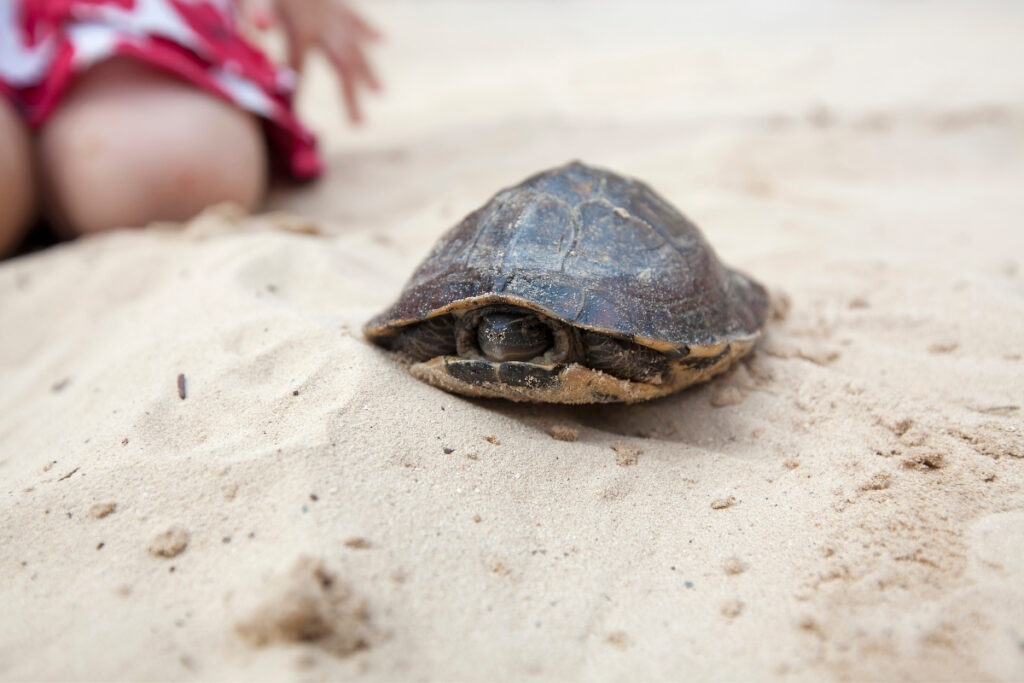
The Impact of Sleep Deprivation on Baby Turtles
Weakened Immune System
Sleep deprivation can weaken the immune system of baby turtles, making them more susceptible to diseases and infections. During sleep, the immune system releases important molecules that protect against pathogens and promote healing. Without enough sleep, their immune system may not function optimally, leaving them vulnerable to various health issues.
Stunted Growth and Development
Sleep deprivation can lead to stunted growth and development in baby turtles. As mentioned earlier, sleep plays a crucial role in muscle, bone, and shell growth. Without adequate rest, baby turtles may experience delays in these essential processes, hindering their overall growth and development. Stunted growth can impair their ability to swim, forage, and compete for resources, hampering their survival in the wild.
Increased Vulnerability to Predators
Sleep-deprived baby turtles are at a higher risk of predation due to their reduced awareness and response capabilities. When sleep-deprived, they may have slower reflexes and impaired cognitive abilities, making them an easy target for predators. Sleep is crucial for their survival, as it allows them to maintain their physical and cognitive skills, ensuring their ability to evade and defend against potential threats.
The Environmental Factors Influencing Sleep in Baby Turtles
Temperature and Light
Temperature and light are significant environmental factors that influence the sleep patterns of baby turtles. As ectothermic animals, turtles rely on external factors to regulate their body temperature. The optimal temperature for sleep varies among species, but it generally falls within a specific range. Baby turtles seek out areas with suitable temperatures for sleep, avoiding extremes that can affect their physiological processes.
Light also plays a role in their sleep patterns. Turtles are diurnal or nocturnal, depending on their species. Nocturnal turtles may sleep during the day and become active at night, while diurnal turtles follow the opposite pattern. Light cues signal their body to enter sleep or wakefulness. Excessive artificial lighting at night can disrupt their sleep-wake cycle, leading to sleep disturbances and potential health issues.
Water Quality and Oxygen Levels
Clean water and proper oxygenation are essential for the sleep and well-being of baby turtles. Their natural habitat must have suitable water quality, free from pollutants and toxins that can harm their health. Adequate oxygen levels in the water are crucial for supporting their physiological processes during sleep. Poor water quality and low oxygen levels can have detrimental effects on their sleep patterns and overall health.
Availability of Shelter
The availability of suitable shelter is vital for baby turtles to rest and sleep safely. Turtles need hiding places or secure shells to protect themselves from potential threats while they sleep. Without access to proper shelter, they may experience increased stress levels and disrupted sleep patterns. Providing adequate shelter is essential for their well-being and ensures that they have a secure place to rest, recover, and grow.
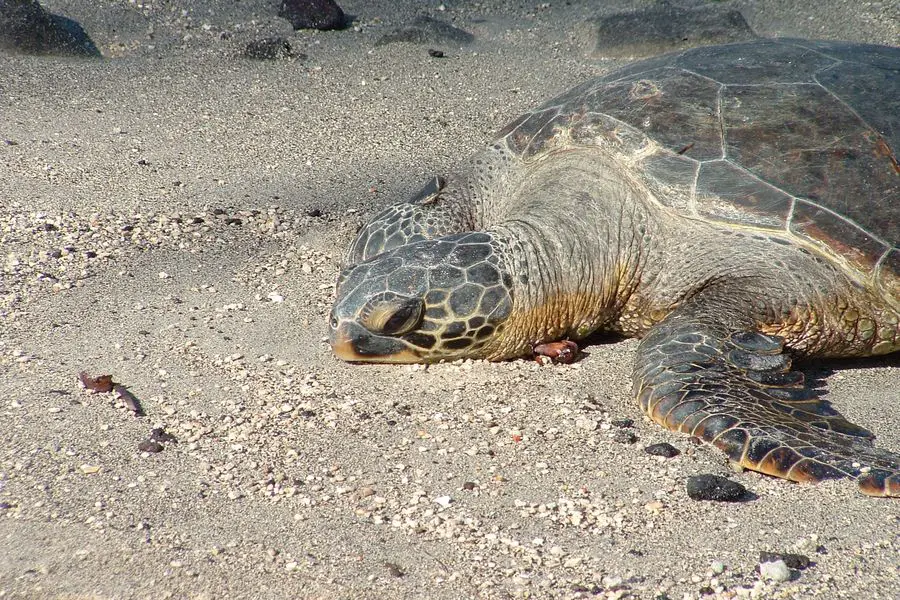
The Importance of Creating a Sleep-Friendly Environment
Appropriate Temperature and Lighting
Creating a sleep-friendly environment for baby turtles involves maintaining appropriate temperature and lighting conditions. Ensuring that their habitat’s temperature falls within their species’ optimal range promotes healthy sleep patterns. Providing dim or natural lighting during the night, while keeping the area adequately dark during the day, helps establish a consistent sleep-wake cycle for diurnal and nocturnal species.
Clean Water and Proper Oxygenation
Maintaining clean water and ensuring proper oxygenation are crucial aspects of creating a sleep-friendly environment for baby turtles. Regular water quality checks and the use of appropriate filtration systems help maintain optimal water conditions. Additionally, ensuring sufficient oxygen levels in the water supports their physiological processes during sleep, promoting good health and well-being.
Secure Shelter and Hiding Places
Creating a sleep-friendly environment also involves providing baby turtles with secure shelter and hiding places. This can include artificial structures, such as caves or logs, that mimic their natural habitat. These shelters should be placed strategically to allow easy access for the turtles while providing a safe and secluded space for them to rest and sleep.
The Effect of Nesting Conditions on Sleep
Nest Depth and Insulation
Sleep starts even before baby turtles hatch from their eggs. Nesting conditions, including nest depth and insulation, play a crucial role in their sleep patterns. The depth of the nest affects the temperature experienced by the developing hatchlings. A well-insulated nest provides a more stable temperature, creating a suitable environment for sleep. Proper nesting conditions ensure that baby turtles receive an optimal start to their sleep routine and subsequent growth.
Nest Density and Competition
Nest density and competition also influence the sleep patterns of baby turtles. In some species, multiple nests can be found in close proximity, leading to competition for resources and suitable sleeping spaces. High nest density can disrupt their sleep patterns, causing increased stress and compromised sleep quality. Protecting nesting sites and ensuring suitable spacing among nests can minimize competition and promote better sleep for baby turtles.
Predator Avoidance Strategies
Nesting conditions that promote predator avoidance contribute to better sleep for baby turtles. Some turtles bury their nests deeply, making them less accessible to potential predators. Nesting in areas with natural barriers or protective vegetation can also help deter predators. By providing secure nesting conditions, we allow baby turtles to sleep peacefully without the constant threat of predation, ensuring their well-being and survival.
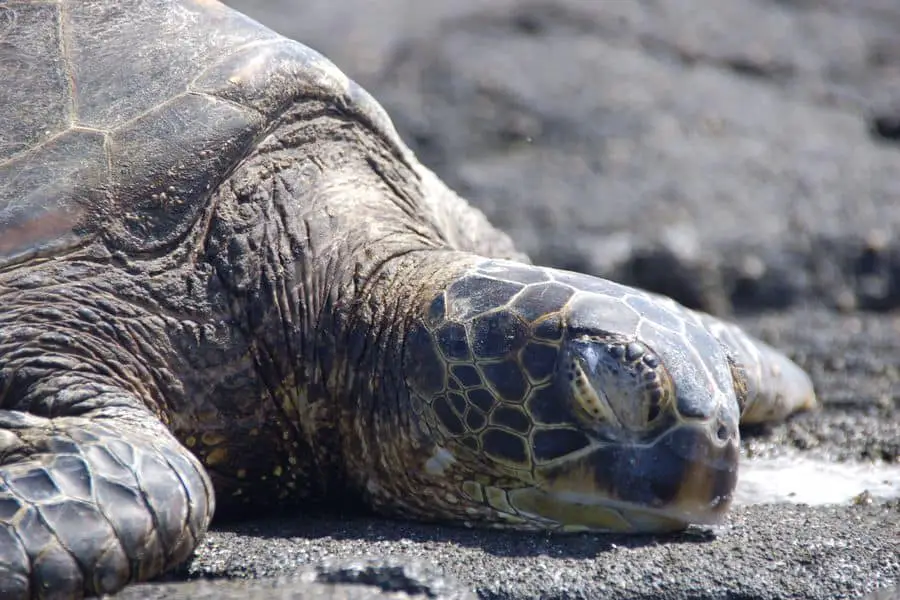
The Role of Parental Care in Ensuring Sufficient Rest and Sleep
Brooding and Nest Attendance
Some turtle species exhibit parental care behaviors that ensure sufficient rest and sleep for their offspring. Female turtles may exhibit brooding behaviors, where they remain in close proximity to their nests. This presence provides protection and reduces stress for baby turtles during sleep. Nest attendance by the mother can also deter predators, allowing the hatchlings to sleep undisturbed.
Thermoregulation and Protection
Parental care includes thermoregulation and protection, which directly impact the sleep patterns of baby turtles. The mother turtle can regulate the temperature of the nest, ensuring optimal conditions for sleep. This thermoregulation supports their physiological processes during sleep and promotes healthy growth. In addition, parental care behaviors such as guarding the nest site provide protection, reducing the risk of predation and allowing for restful sleep.
Guidance and Education
Parental care also includes guiding and educating baby turtles, teaching them survival skills and sleep patterns. Through observation and interaction, the mother turtle can guide the hatchlings in finding suitable sleeping spots, understanding their environment, and responding to potential threats. This guidance and education lay the foundation for healthy sleep patterns and support the overall development of baby turtles.
The Impact of Human Activities on Sleep Patterns
Artificial Lighting and Noise Pollution
Human activities can significantly disrupt the sleep patterns of baby turtles. Artificial lighting, such as streetlights or beachfront developments, can confuse hatchlings and interfere with their sleep-wake cycle. Excessive artificial lighting disorients them and makes it challenging to find their way to safety. Similarly, noise pollution from human activities can disrupt their sleep, increase stress levels, and impact their overall health and well-being.
Habitat Destruction and Disturbance
Habitat destruction and disturbance caused by human activities can have detrimental effects on the sleep patterns of baby turtles. Clearing coastal vegetation, polluting water bodies, and modifying natural habitats disrupt their nesting sites and reduce the availability of suitable sleeping areas. These disturbances can lead to increased stress levels, compromised sleep quality, and a greater risk of predation.
Interaction and Handling
Interaction and handling by humans, even with good intentions, can disturb the sleep patterns of baby turtles. Touching or picking up baby turtles can cause stress and disrupt their sleep. It is crucial to observe baby turtles from a safe distance and allow them to sleep undisturbed. Respecting their natural behavior and sleep patterns is vital for their well-being and survival.
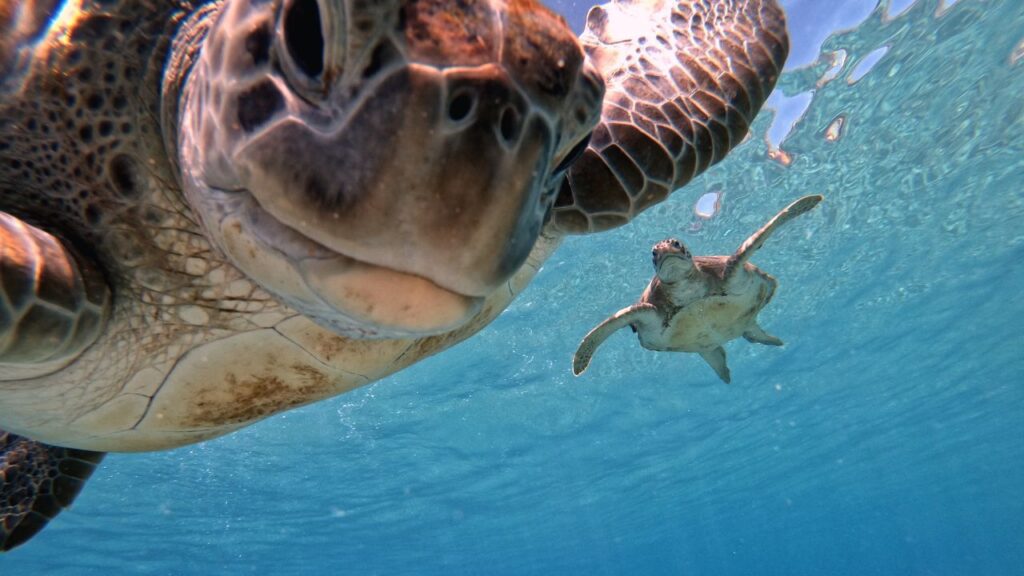
The Importance of Monitoring Sleep in Baby Turtles
Understanding Sleep Cycles and Behaviors
Monitoring sleep in baby turtles provides valuable insights into their sleep cycles and behaviors. By observing their sleep patterns, researchers can understand the duration, frequency, and stages of sleep experienced by baby turtles. This knowledge helps in assessing their overall health, identifying potential sleep-related issues, and implementing appropriate measures to promote healthy sleep.
Assessing Health and Well-being
Sleep monitoring also helps in assessing the health and well-being of baby turtles. Sleep disturbances or abnormal sleep patterns may indicate underlying health conditions or environmental factors that need to be addressed. By keeping a record of their sleep patterns and correlating them with other health indicators, researchers and conservationists can ensure that baby turtles receive the necessary care and support for optimal growth and development.
Managing Sleep-related Issues
Monitoring sleep allows for the early identification and management of sleep-related issues in baby turtles. Sleep disturbances, such as insomnia or excessive sleepiness, can have debilitating effects on their health and survival. By tracking their sleep patterns and implementing appropriate measures, such as modifying their environment or providing medical interventions when necessary, sleep-related issues can be effectively managed, promoting their well-being and ensuring successful growth.
Strategies for Promoting Optimal Rest and Sleep in Baby Turtles
Creating a Naturalistic Environment
Creating a naturalistic environment is essential for promoting optimal rest and sleep in baby turtles. Mimicking their natural habitat as closely as possible provides them with a sense of security and familiarity. This includes providing appropriate substrate, vegetation, and hiding places that resemble their wild habitat. A comfortable and familiar environment reduces stress and promotes healthy sleep patterns.
Establishing Regular Sleep Patterns
Establishing regular sleep patterns is crucial for baby turtles’ growth and development. Consistency in sleep-wake cycles helps regulate their physiological processes and supports the formation of healthy sleep habits. Maintaining a predictable light-dark cycle, providing suitable temperature conditions, and avoiding disturbances during their designated sleep periods establish regular sleep patterns, enabling them to get the rest they need.
Providing Enrichment and Stimulation
Promoting optimal rest and sleep in baby turtles also involves providing enrichment and stimulation during their wakeful periods. Engaging them in activities such as exploring their environment, interacting with suitable toys, and providing opportunities for foraging and swimming keeps them physically and mentally stimulated. This stimulation ensures that they expend their energy appropriately, which helps facilitate rest and sleep when needed.
Research and Conservation Efforts
Sleep Studies and Observations
Research on sleep in baby turtles plays a crucial role in understanding their sleep patterns and promoting their overall well-being. Sleep studies and observations provide valuable information on sleep duration, frequency, stages, and behaviors, helping researchers identify the factors that contribute to healthy sleep. This knowledge guides conservation efforts and ensures appropriate measures are implemented to protect and support the sleep needs of baby turtles.
Protecting Turtle Nesting Sites
Conservation efforts focus on protecting turtle nesting sites to ensure the continued survival of baby turtles. By preserving and conserving their natural habitats, including nesting areas, we protect their sleep environment. Protecting nesting sites from human disturbances, implementing regulations to minimize habitat destruction, and creating awareness about the importance of turtle conservation contribute to the preservation of their sleep patterns and overall well-being.
Education and Awareness Programs
Education and awareness programs are essential for saving baby turtles and promoting their sleep needs. By educating communities, tourists, and the general public about the importance of protecting and respecting turtles’ sleep patterns, we can minimize human disturbances and promote conservation practices. These programs also emphasize the role that sleep plays in the growth and development of baby turtles, fostering a sense of responsibility and empathy towards these incredible creatures.
Conclusion
Rest and sleep are essential for the growth and development of baby turtles. By understanding their sleep patterns and the factors that influence their sleep, we can create a sleep-friendly environment and ensure their well-being. Sleep deprivation can have detrimental effects on their physical and cognitive development, making them more vulnerable to predators and compromising their overall health. Protecting their sleep environment, implementing appropriate measures, and supporting research and conservation efforts are crucial steps towards safeguarding the future of baby turtles. Together, we can make a difference in the lives of these fascinating creatures and promote their healthy sleep habits for generations to come.
